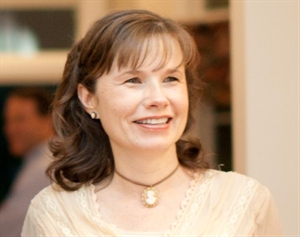Society member Joanna Burgess, BSN, RN, CWOCN, shared her experience about growing up as an ostomate and her contribution to the members-only document, Pediatric Ostomy Complications: Best Practice for Clinicians.
You can read Joanna’s story below, and if you have a story you would like to share please email us at share@wocn.org.
Almost a decade ago, as a wound, ostomy and continence (WOC) student at Emory University, I was mentored by Michelle Rice, MSN, RN, CWOCN, a clinician at Duke University Medical Center. I remember being intrigued by the unique needs of the pediatric population, in particular, the neonates; some of which had multiple stomas from necrotizing enterocolitis. Michelle’s unique knowledge on how to handle the delicate neonate population came from years of experience and the dedication to assisting new parents with the physical and emotional needs of caring for an infant or child with an ostomy. Therefore, it was an honor to work with Michelle and other well respected wound, ostomy and continence nurses who have specialties in pediatric ostomy care to create the WOCN® Society’s members-only document, Pediatric Ostomy Complications: Best Practice for Clinicians.
Working with the WOCN Society’s Pediatric Ostomy Task Force of the Ostomy Committee and collaborating on the Pediatric Ostomy Complications: Best Practice for Clinicians was a personal experience for me and an undertaking that I dedicate to my father, who was the primary caregiver of my ostomy in my growing years. In Boston 1965, when I was just three years old, something that was suspected to be a simple urinary tract infection quickly turned into a diagnosis of rhabdomyosarcoma of the bladder. My original surgical treatment was a cystectomy and creation of ureterosigmoidostomy, generically known as a “wet bladder.” However, due to multiple kidney infections I experienced from the procedure, the creation of an ileal conduit quickly followed. All of this occurred during a period of time when there was no ostomy nurse at Boston Children’s Hospital to teach and support my family, and there was no access to online resources.
My father’s recollection of the experience was that the nurses seemed frightened to care for me. He remembers being handed a brown paper bag containing a few ostomy supplies at the time of my hospital discharge. He recalls returning home and fumbling through the packaging of an unassembled seven-piece pouching system. Through trial and error, he eventually mastered how to assemble the pouch, but he couldn’t figure how to keep it on me! To his relief, the packaging contained the phone number for the ostomy supply company Torbot, located in Rhode Island. My father and I quickly made the four hour trip from Boston to Rhode Island and met with the founder of Torbot, an ostomate, who showed my father how to care for my urostomy. My father was so overwhelmed with finding a confidant in the ostomy world, he even bought me a lifetime supply of products “just in case they ever stopped making them.”
Growing up with an ostomy became a part of my life, it seemed normal and was all I ever really knew. The only problem I can remember was an occasional itchy skin condition, sometimes causing me to scratch to the point of bleeding. This bleeding incident happened once in the first grade, and I remember my teacher was terrified as she scooped me up in her arms and ran down the hall to the school nurse. There was no doubt the problem with my skin came from the layers of bonding cement that was used to keep my ostomy pouch in place. The only remedy then was to apply karaya powder to the skin, which stung and was painful. There were also metal clips on my ostomy belt that would dig into my sides, but I learned to live with the fear that without the belt my pouch would leak or fall off. Despite these few irritations, I don’t remember feeling limited because of my ostomy. I continued to do the things I loved, such as swimming and dancing.
I had close friends who knew about the secret that I wore under my clothes. I remember my mother would coach me on how to discreetly change my clothes at slumber parties so no one would notice my pouch. This skill served me well in my later years of junior high and high school gym classes, where I was expected to change clothes in front of other young women in the locker room. I admit, I did feel very alone. I remember wishing and longing to know someone like me – someone else who wore an ostomy pouch. Since childhood, I have connected with several adults who also grew up with an ostomy and were treated during my era. That feeling of being alone would have been greatly alleviated, for both my family and I, had us ostomates known how to connect with one another.
Thank goodness we now know today how the times would change; how ostomy nursing would become a career that would involve not only care of the patient’s ostomy, but ongoing education in building confidence and independence with self-care and emotional support. We now know that products would go through many changes and improvements and that product development would be an ongoing process by dedicated companies and researchers.
Today, we have much more knowledge concerning the care of the pediatric patient and have many more products available to ease the challenges that face this population. As an ostomy patient and ostomy nurse, I currently share my story across the country. I am continually reminded of the need to reach out to families who have children living with an ostomy and connect them to the resources they need to aid the emotional and physical aspects of ostomy care. I am also reminded that we need more ostomy nurses caring for the pediatric population. These families sometimes search for weeks, months or even years looking for help.
In creating the Pediatric Ostomy Complications: Best Practice for Clinicians document, it is the hope of the WOCN Society Pediatric Ostomy Task Force that these best practices will give ostomy nurses, and any nurse who works with pediatric ostomies, the confidence needed to take on the challenges the pediatric population faces, from stoma to peristomal complications. When nurses feel empowered, parents will ultimately feel empowered to take on the responsibility of their child’s care with greater ease. The WOCN Society looks forward to hearing your comments about the Pediatric Ostomy Complications: Best Practice for Clinicians document, and encourage you to keep track of your own personal stories and suggestions as the WOC community continues to strive for success for the pediatric ostomate.

Joanna Burgess, BSN, RN, CWOCN is a full scope practicing Wound, Ostomy and Continence nurse at WakeMed Health and Hospitals acute care center in North Carolina. Joanna’s passion for ostomy care stems from her 50-year journey as an ostomate, after being diagnosed with bladder cancer at the age of three. Joanna’s contributions to the WOC practice include serving on the Wound, Ostomy and Continence Society™ (WOCN®) national Ostomy Committee for three years and contributed to the Wound Care Core Curriculum Textbook, in which she wrote on the topic of lymphedema. Joanna is the 2011 Great Comebacks® award recipient and has shared her story on a state, national and international level. She is a board member for the United Ostomy Associations of America, Inc. and she is the 2016 South East Regional WOC nurse of the year.

